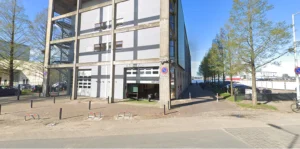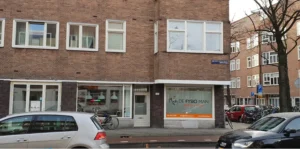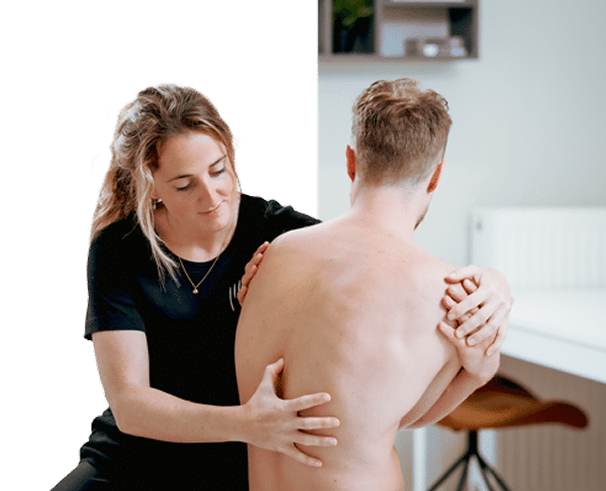A torn knee ligament can seriously disrupt your daily life. Whether it’s from a sports accident or a wrong move, the pain and instability make even the smallest movements challenging. Fortunately, recovery is possible with proper care and guidance. In this article, you’ll learn all about the symptoms, tests and effective treatment methods to get back on your feet fully.
In brief
- Torn knee ligaments often result from a hard blow, twist or fall.
- Symptoms include pain, swelling, bruising, instability and a “snapping” sensation at the injury.
- There are different types of knee ligaments (inner, outer, cruciate), and the severity of the injury varies from mild strain to complete tear.
- Diagnoses are made through physical examination, X-rays or MRI scans.
- Recovery focuses on rest, cooling, physical therapy and sometimes surgery for severe damage.
- A physical therapist helps with recovery by providing customized exercises, improving mobility and balance, and advising on assistive devices such as braces or tape.
- If pain, swelling or instability persists, medical attention should be sought.

What are torn knee ligaments?
Knee ligaments are sturdy structures that support the stability of the knee and control movement. These ligaments can be damaged by an unexpected movement, such as a fall, hard blow or twisting. There are several knee ligaments that can be affected: the inner and outer collateral ligaments on the sides of the knee and the anterior and posterior cruciate ligaments in the middle of the knee. Certain conditions, such as osteoporosis, may increase the risk of knee injuries because the bones are more brittle and weaker.
Symptoms of torn knee ligaments
A torn knee ligament can cause a variety of symptoms, including:
- Sudden, sharp pain in the knee.
- Swelling that occurs within a few hours.
- Bruising from internal bleeding.
- Difficulty walking or feeling of falling through the knee.
- Instability and a “loose” feeling in the knee.
- An audible or palpable “snapping” sound during injury.
Gradations of injury
Torn knee ligaments are graded:
- Grade 1: Slight sprain with minimal damage. The knee is somewhat stiff and sore, but usually loadable.
- Grade 2: Partial tear with significant swelling, pain and bruising. Walking may be difficult.
- Grade 3: Complete tear of the knee ligament. The knee feels unstable and it is virtually impossible to stand on the leg.
Testing of torn knee ligaments
Determining the severity of torn knee ligaments requires a combination of physical examination and imaging techniques:
- Physical examination
A doctor or physical therapist assesses the stability of the knee through specific movement tests. This involves looking for pain, swelling and movement restrictions. - X-rays
These are used to rule out bone fractures that can often accompany knee ligament injuries. - MRI scan
For a detailed view of damaged structures, such as ligaments, cartilage or the meniscus.
Torn knee ligaments repair
The recovery process varies depending on the severity of the injury:
- Acute phase (first 48-72 hours):
- Rest: Avoid straining the knee.
- Ice: Cool regularly to reduce swelling and pain.
- Compression: Use a compression bandage to provide support.
- Elevation: Keep the knee elevated to reduce fluid accumulation.
- Rehabilitation:
- Phase 1: Exercises aimed at mobility and preventing stiffness, such as light bending and stretching movements.
- Phase 2: Strengthening the muscles around the knee for better stability.
- Phase 3: Functional training, such as balance exercises and controlled turning movements.
- Stage 4: Gradual return to sports or other intensive activities.
- Long-term care:
- Using braces or support during sports activities can help prevent recurrence.
- Regular physical therapy ensures that strength, balance and mobility remain optimal.
Recovery time by grade:
- Grade 1: 2-4 weeks.
- Grade 2: 4-8 weeks.
- Grade 3: 3-6 months or longer, depending on the need for surgery.
What can the physical therapist do for you?
A physical therapist plays an important role in the recovery of torn knee ligaments. In addition to supporting the healing process, the physical therapist helps you regain strength, mobility and stability in the knee. Here’s what to expect:
- Diagnosis and Treatment: The physical therapist performs a comprehensive examination to assess the severity of the injury and establishes a treatment plan tailored to your personal situation and goals.
- Rehabilitation exercises: You will receive a customized exercise regimen to strengthen the muscles around your knee and improve stability. This can range from simple movement exercises to more intense exercise programs as your recovery progresses.
- Mobility and balance: Through specific exercises, you learn to regain flexibility and stability of the knee. This reduces the risk of future injuries.
- Advice on assistive devices: Depending on the severity of your injury, the physical therapist may advise you on the use of braces, tape or other assistive devices during your recovery or sports activities.
- Preventive guidance: To prevent recurrence, you will be given tips and exercises to strengthen your knees and improve your technique during daily activities or sports.
With proper guidance from a physical therapist, you can count on a structured recovery process, working step by step to repair your knee and resume your normal activities.
When to seek medical help?
Contact a physician if:
- You cannot stand on the affected leg.
- The knee continues to swell or remains very painful.
- Your knee feels unstable or seems “locked.”
- There is no improvement after several weeks.
With proper care and guidance, most people can make a full recovery from torn knee ligaments. Physical therapy plays a crucial role here to regain strength and mobility and prevent future injuries.
Contact a primary care physician or physical therapist to start your recovery process in the best way possible!

Physical therapy for torn knee ligaments at The Physio Man
At The Physio Man, we understand that torn knee ligaments not only cause physical discomfort, but can also be a mental strain for athletes and active people. Our therapists are ready to guide you with a treatment plan that matches your recovery goals and sports level. With personal attention and customized therapies, we’ll support you in your recovery and help you return to your sport or daily activities stronger and injury-free.
Make an appointment at The Physio Man today and experience how our experienced physical therapists can help you effectively repair your ankle ligaments and improve your physical well-being.
Why choose The Physio Man?
- Latest treatment techniques
- We look at the body as a whole
- 80% of our patients are complaint-free within a few treatments
- No long waiting lists
- Also open in the evening
At The Physio Man, we offer a wide range of treatment options aimed at reducing symptoms and improving quality of life. For questions or an intake consultation, contact us. Email info@defysioman.nl or call 020-3542926. Prefer to come by? Visit us at Jan van Galenstraat 301 in Amsterdam.
For more information also watch the following video:


